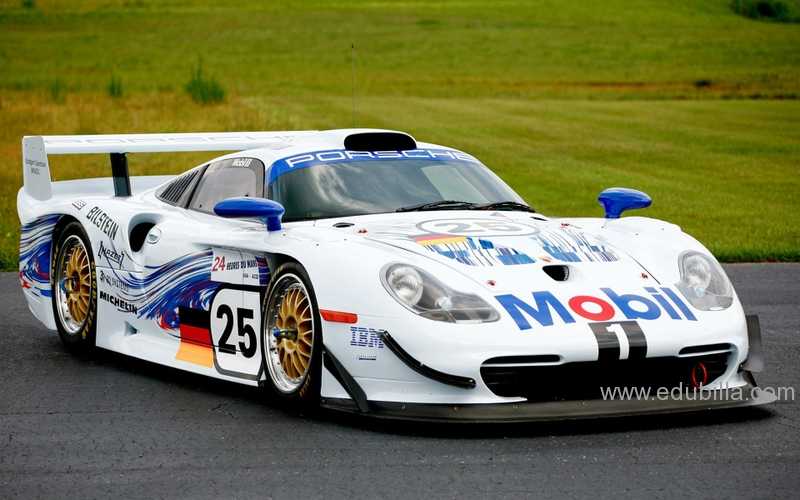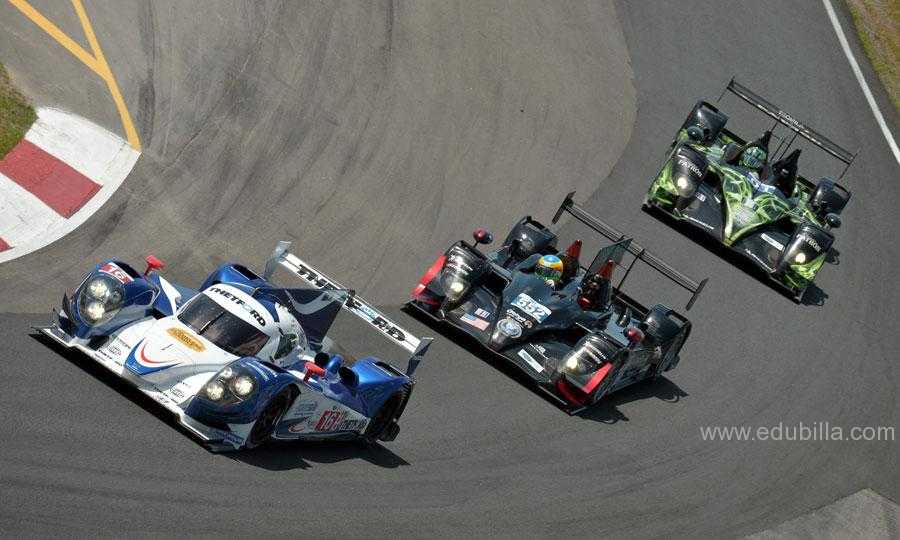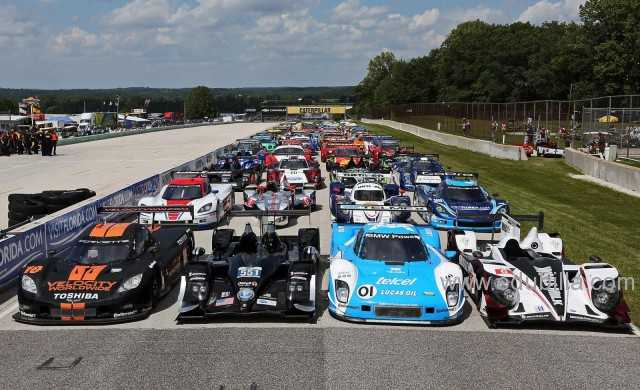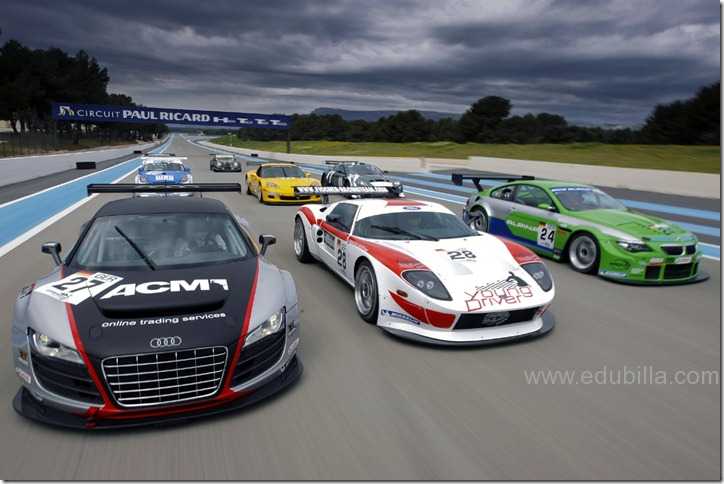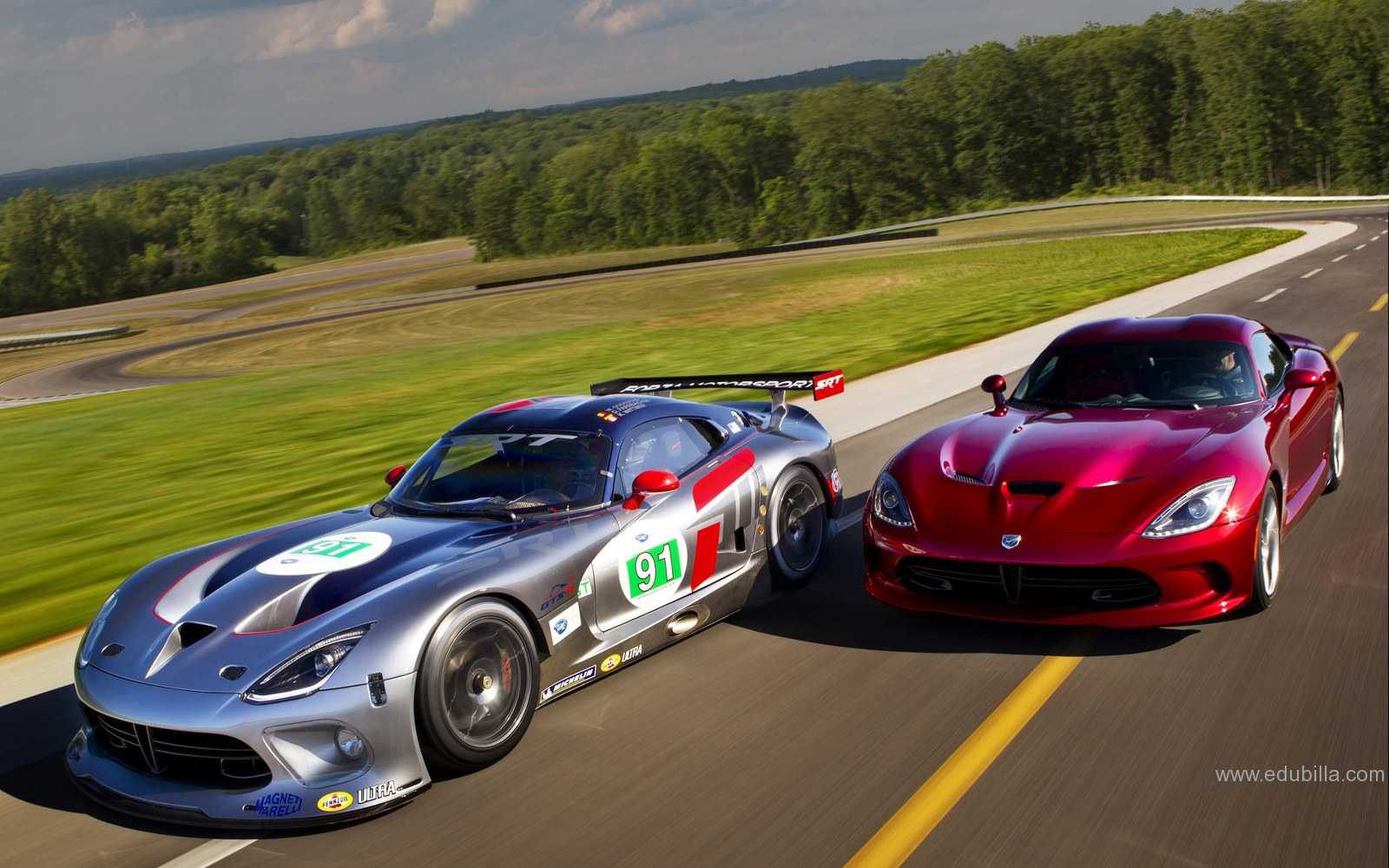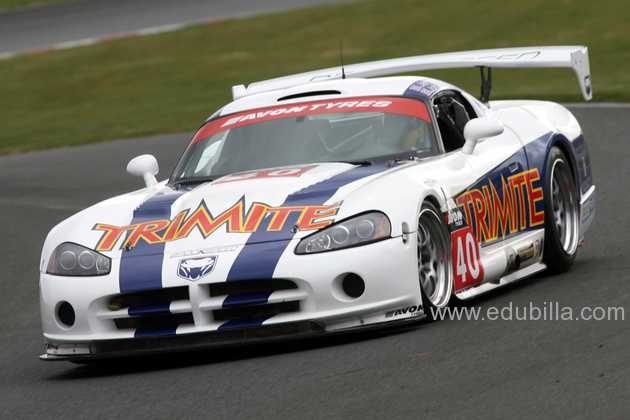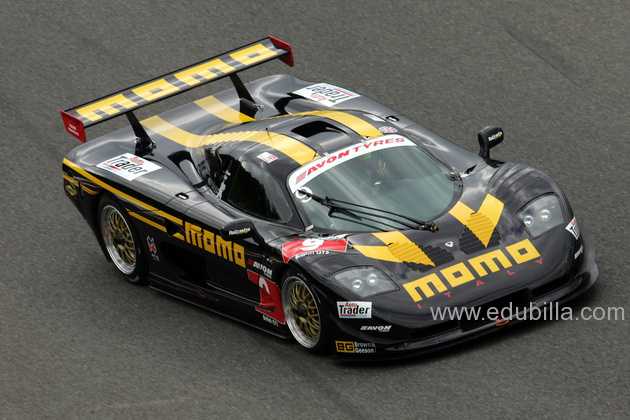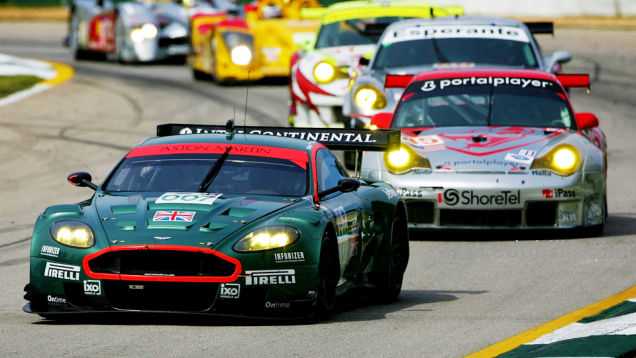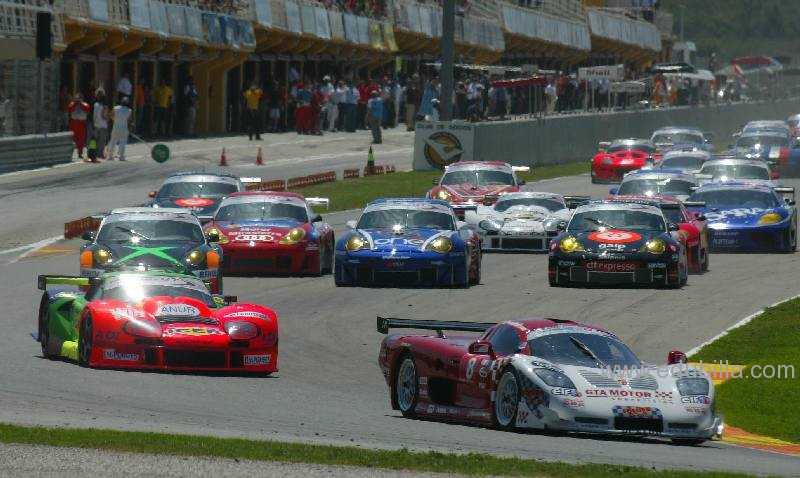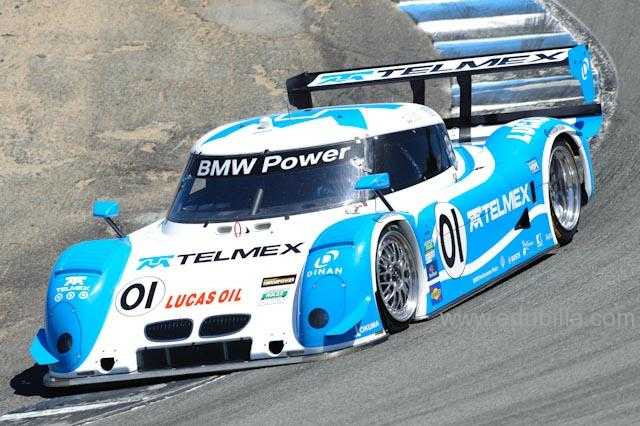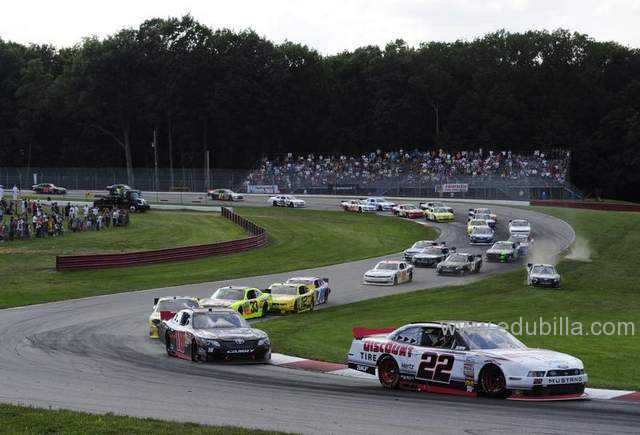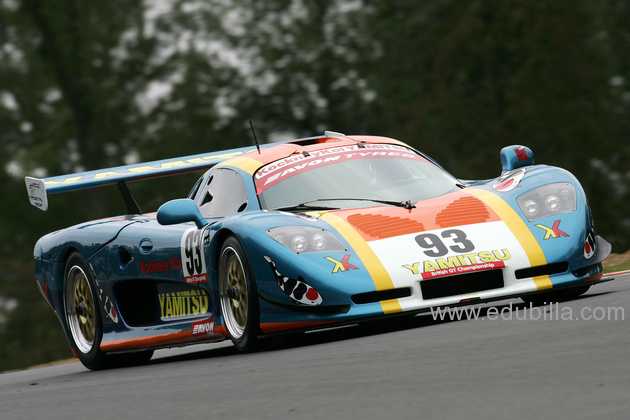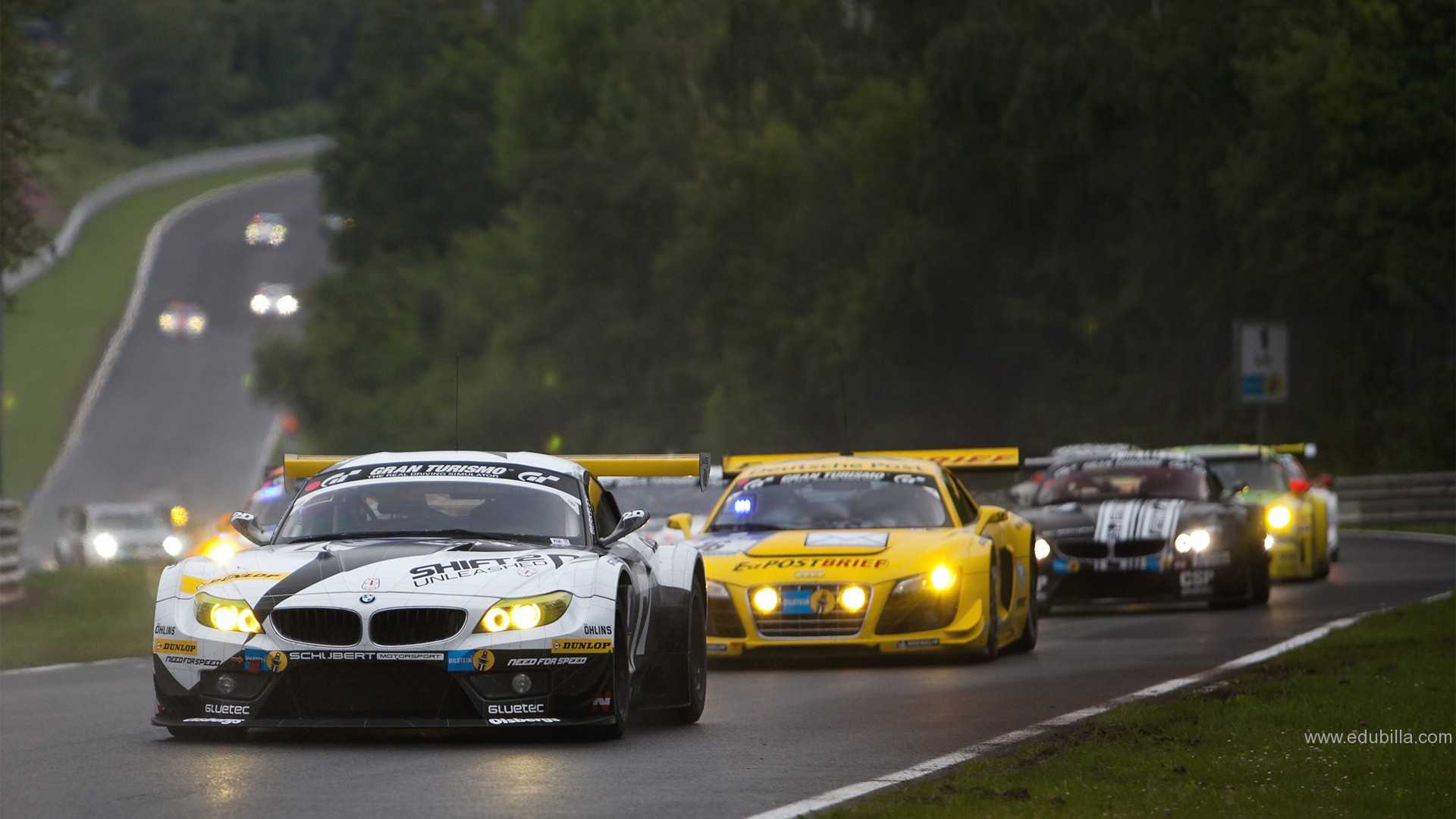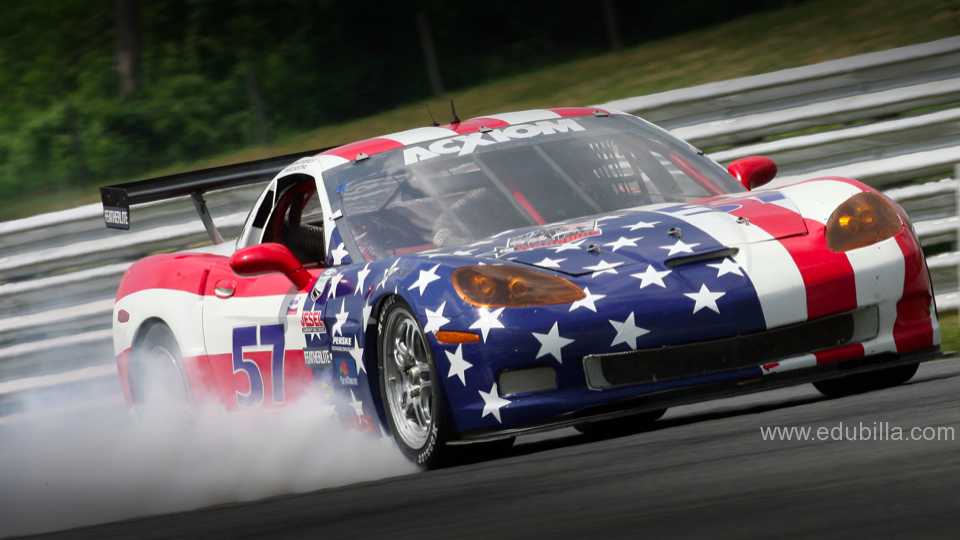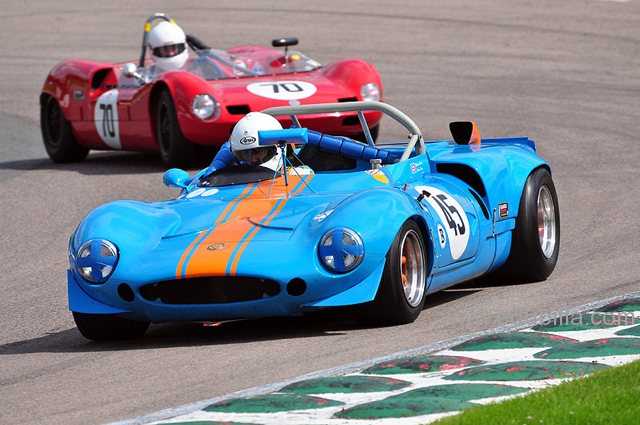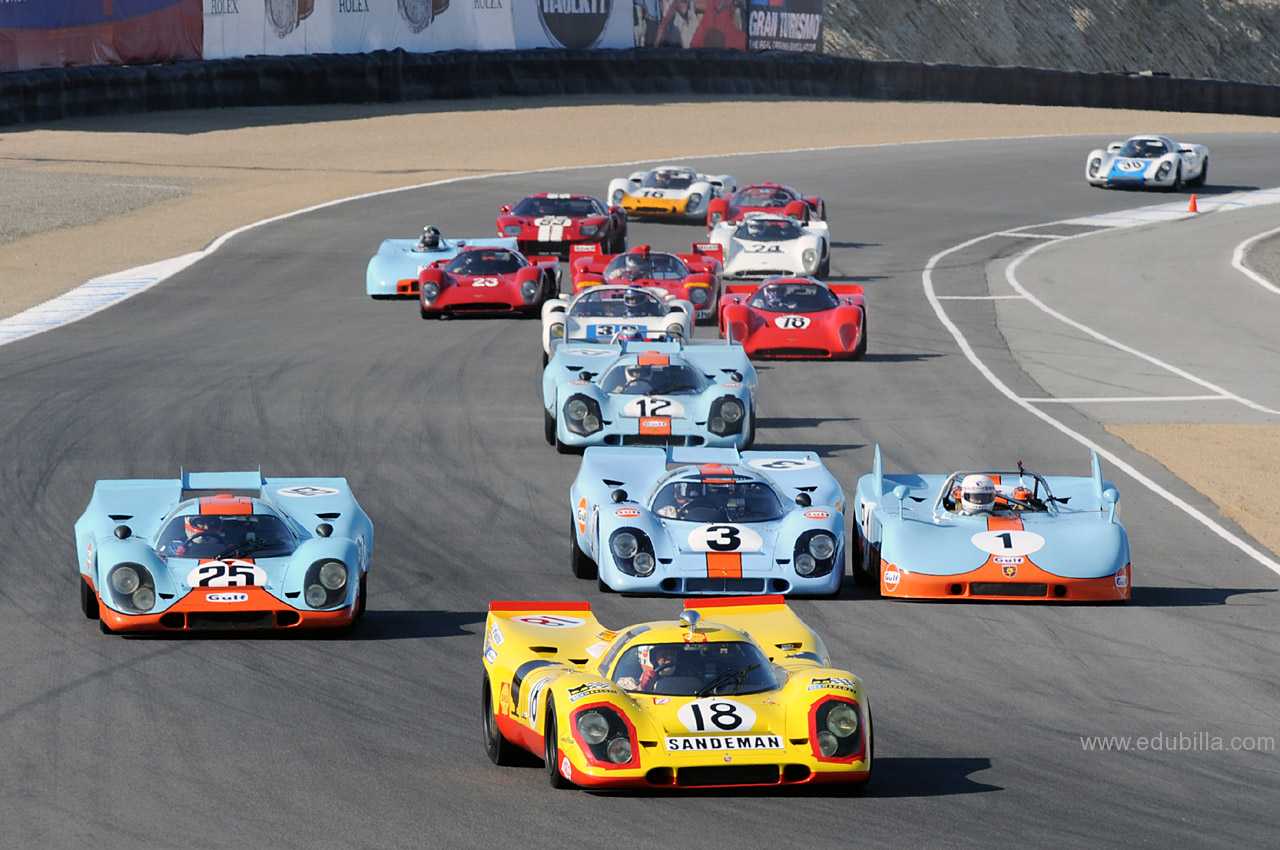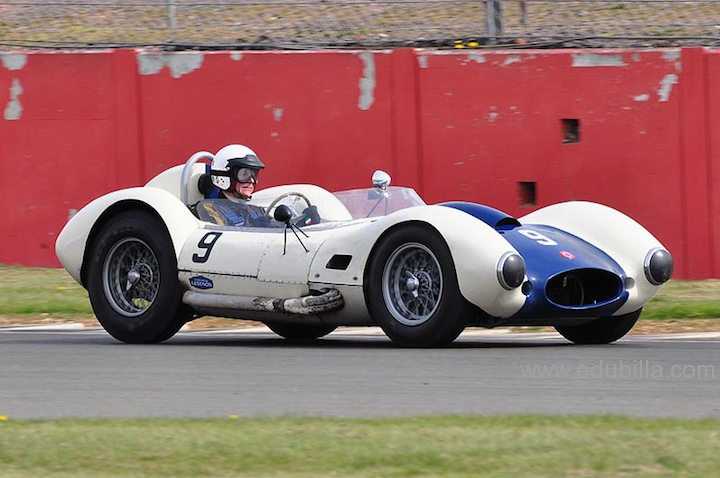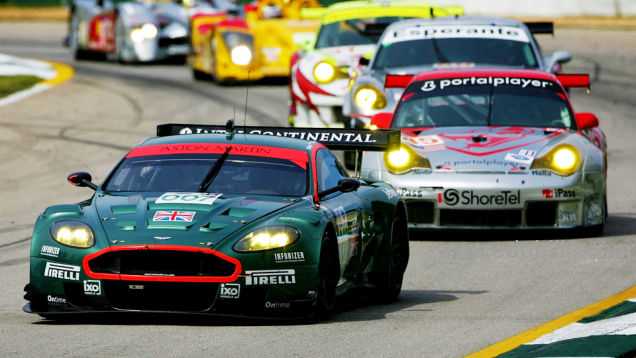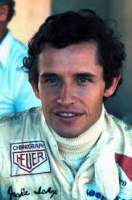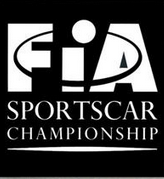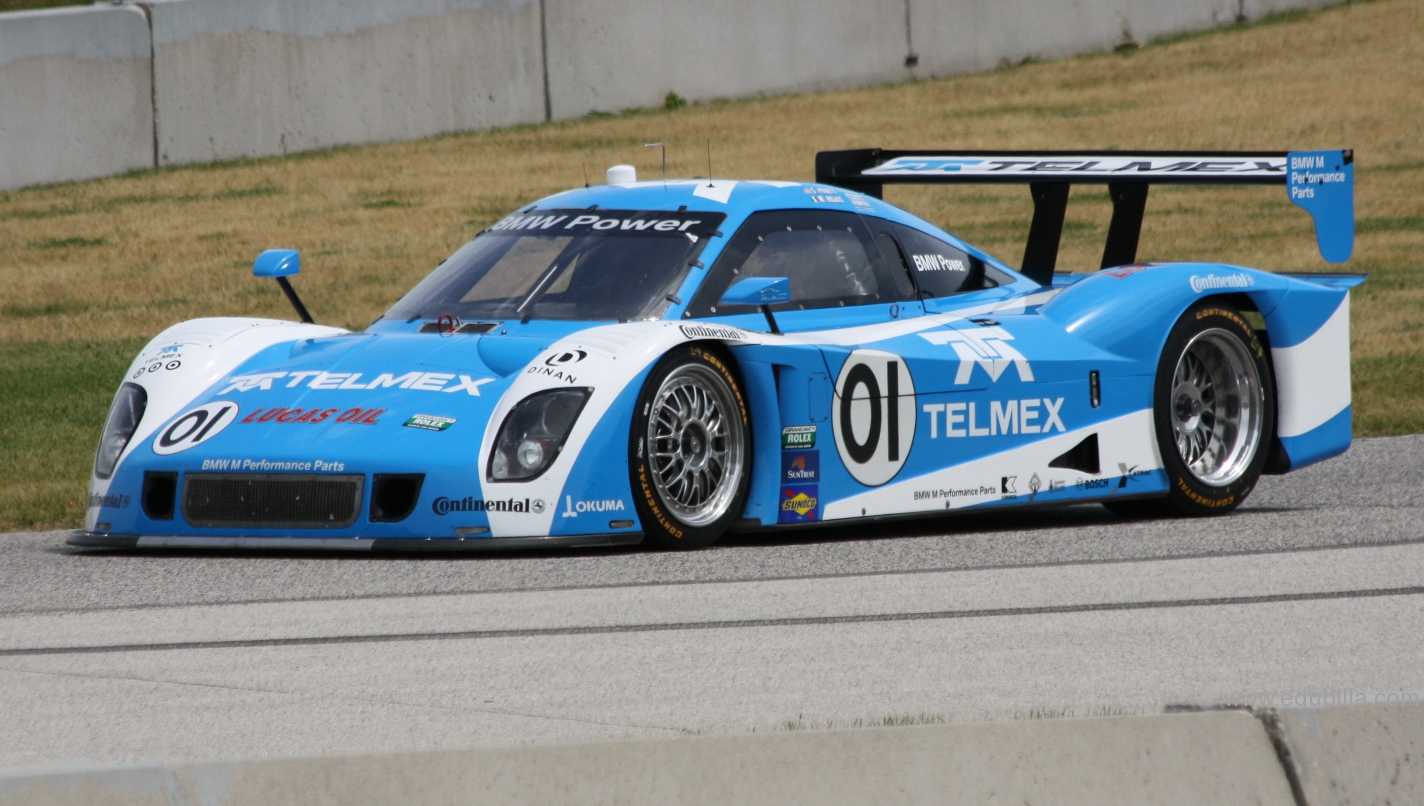
Overview Of Sports car racing
Sports car racing is a form of circuit auto racing with sports car that have two seats and enclosed wheels. They may be purpose-built or related to road-going models.
A type of hybrid between the purism of open-wheelers and the familiarity of touring car racing, this style is often associated with the annual Le Mans 24 Hours endurance race. First run in 1923, Le Mans is one of the oldest motor races still in existence. Other classic but now defunct sports car races include the Italian classics are
- Targa Florio (1906–1977)
- Mille Miglia (1927–1957) and
- Mexican Carrera Panamericana (1950-1954).
The prestige of storied marques such as Porsche, BMW, Ferrari, Lotus, Maserati, Alfa Romeo, Lancia, Mercedes-Benz, Jaguar, and Aston Martin is built in part upon success in sports car racing and the World Sportscar Championship. These makers' top road cars have often been very similar both in engineering and styling to those raced. This close association with the 'exotic' nature of the cars serves as a useful distinction between sports car racing and touring cars.
12 Hours of Sebring:
The 12 Hours of Sebring is an annual motorsport endurance race for sports cars held at Sebring International Raceway, on the site of the former Hendricks Army Airfield World War II air base in Sebring, Florida. The event is the second round of the United SportsCar Championship and in the past has been a round of the now defunct World Sportscar Championship, IMSA GT Championship and American Le Mans Series. In 2012, the race was the opening event of the FIA World Endurance Championship.
24 Hours of Daytona:
The 24 Hours of Daytona, currently known as the Rolex 24 At Daytona for sponsorship reasons, is a 24-hour sports car endurance race held annually at Daytona International Speedway in Daytona Beach, Florida. It is run on a 3.56-mile (5.73 km) combined road course, utilizing portions of the NASCAR tri-oval and an infield road course. Since its inception, it has been held the last weekend of January or first weekend of February, part of Speedweeks, and it is the first major automobile race of the year in the United States. It is also the first race of the season for the TUDOR United SportsCar Championship.
The 12 Hours of Sebring, 24 Hours of Daytona, and 24 Hours of Le Mans were once widely considered the trifecta of sports car racing. Driver Ken Miles would have been the only ever to win all three in the same year but for an error in the Ford GT40's team orders at Le Mans in 1966 that cost him the win in spite of finishing first.
Game Rules
Equipments Need For Sports car racing
- Castrol SRF Synthetic Racing Brake Fluid
- Bell M.4 Helmet, Snell SA2010 Approved
- (LI) Antigravity 12v Lithium YTX12 OEM Case Battery, 24 Cell
- HANS Devices
- Ballistic LiFePO4 AutoRace Batteries
- AiM Solo On-Board Lap Timers
- RACING SUITS
- RACING SHOES
History Of Sports car racing
Sports Car Competition:
In national rather than international racing, sports car competition in the 1950s and early 1960s tended to reflect what was locally popular, with the cars that were successful locally often influencing each nation's approach to competing on the international stage.
1960s and 1970s – Evolution, rise, and decline
Powerful prototypes (effectively pure-bred two-seater racing cars with no real link to production vehicles) started to appear as the 1960s progressed, with worldwide battles between Ferrari, Ford, Porsche, Lotus, Alfa Romeo and Matra as well as other more specialist marques running on into the early 1970s. The competition at Le Mans even made it to the movie screens, with Steve McQueen's film Le Mans. This era was seen by many as the highpoint of sports car racing, with the technology and performance of the cars comfortably in excess of what was seen in Formula 1. Homologation saw many out-and-out racing cars produced in sufficient quantities to see them classed as production vehicles; the FIA responded by placing more restrictions on even the allegedly production-based cars and placed draconian limits on the power available to prototypes – these prototypes of the late 1960s/early 1970s were comfortably quicker than contemporary Grand Prix machinery and for 1972 they were constrained to run much smaller engines to F1 rules, often detuned for endurance.
United States Road Racing Championship:
A peculiarly American form of sports car racing was the Can-Am series, in which virtually unlimited sports prototypes competed in relatively short races. This series ran from 1966 to 1974 and was an expansion of the USRRC that conformed to FIA Group 7 rules. The original Can-Am fell victim to rising costs and the energy crisis.
1980s – Group C and IMSA GTP
In Europe, the FIA adopted the ACO GTP rules virtually unchanged and sanctioned the Group C World Endurance Championship (or World Sportscar Championship), featuring high-tech closed-cockpit prototypes from Porsche, Aston Martin, Mercedes-Benz, Nissan, Jaguar and others. In the USA, the IMSA Camel GTP series boasted close competition between huge fields of manufacturer-backed teams and privateer squads – the cars were technically similar to Group Cs but used a sliding scale of weights and engine capacities to try to limit performance. Both Group C and GTP had secondary categories, respectively Group C2 and Camel Lights, for less powerful cars, targeting entries by small specialist constructors or serious amateur teams.
1990s – Rebirth and revival
In an attempt to provide a top-class endurance racing series to replace the WSPC, a number of GT series sprung up at national and European level, with the BPR series eventually evolving into the FIA GT Championship. IMSA GTP continued for a few more years but was replaced by a series for World Sports Cars – relatively simple open-top prototypes – which gave rise to cars such as the Ferrari 333SP and the Riley & Scott Mk 3, supported by GTs. As the 1990s progressed, these prototypes and others like them started to be raced in Europe and an FIA Sports Car series evolved for them.
2000s – Resurgence in the US
The debut of the SpeedVision television network brought a resurgence of interest in sports car racing in the US, with the network originally showing a large amount of sports car racing and sports car related programming. However, the network was eventually sold to News Corporation, which made it NASCAR-centric, and has since replaced the sports car related programming with either NASCAR programming (in 2009, NASCAR purchased the Grand American Road Racing Association, which is an independent subsidiary) or reality shows.
American Le Mans Series:
The IMSA GT Series evolved into the American Le Mans Series; the European races eventually became the closely related Le Mans Series, both of which mix prototypes and GTs; the FIA remains more interested in its own GT and GT3 championships, with the ACO's rules the basis for the LMS and ALMS. The Le Mans Prototype is somewhat reminiscent of the old Can Am prototype.
Grand American Road Racing Association:
Further splits in the American scene saw the Grand American Road Racing Association form a separate series, the Rolex Sports Car Series, with its own GT and prototype rules aimed at providing cheaper, lower-cost racing for independent teams. Grand Am's Continental Tire Sports Car Challenge, a support series for the Rolex Series, provides a similar series to the old Trans Am Series, mixing conventional sports cars and touring cars.
NASCAR:
Due to Grand Am's affiliation with NASCAR, many NASCAR drivers occasionally participate in the Rolex Sports Car Series. Max Papis is a notable example in that he was a road racer prior to his tenure in the Sprint Cup Series. Many of these drivers only participate in the 24 Hours of Daytona.
2010s – Reformatting:
The 2010s have seen a major overhaul of sports car racing in the United States. The Pirelli World Challenge reformatted in 2010 to have a showroom stock touring car group comparable to that of the Continental Challenge's Grand Sport class, promoting its other touring car class to "GTS". This came after several years of the old TC class being an Acura-BMW-Mazda affair. For 2012, the series will be adopting a "B-spec" touring car class comparable to that of the Continental Challenge's Street Tuner class.
Meanwhile, the Rolex Sports Car Series has overhauled its Daytona Prototype class for 2012, allowing for production-based designs. Already planned is a Corvette-based prototype.
Sports car:
The definition of a sports car is not precise, but from the earliest first automobiles "people have found ways to make them go faster, round corners better, and look more beautiful" than the ordinary models inspiring an "emotional relationship" with a car that is fun to drive and use for the sake of driving.[6] The basis for the sports car is traced to the early 20th century touring cars and roadsters. These raced in early rallys, such as the Herkomer Cup, Prinz Heinrich Fahrt, and Monte Carlo.
1910-Though the term sports car would not be coined until after World War One,[2] the first sports cars are considered to be the 3 litre 1910 Prince Henry (Prinz Heinrich) Vauxhall 20 hp (tax rating) and the 27/80PS Austro-Daimler designed by Ferdinand Porsche.
1911-Hispano-Suiza's Alfonso XIII is considered[by whom?] the first sportcar developed between 1911 and 1914.
1921-In 1921, Ballot premiered its 2LS, with a remarkable 75 hp (56 kW) DOHC two liter, designed by Ernest Henry (formerly of Peugeot's Grand Prix program), capable of 150 km/h (93 mph); at most, one hundred were built in four years. This was followed by the SOHC 2LT and 2LTS. The same year, Benz built a supercharged 28/95PS four for the Coppa Florio; Max Sailer won
1924-Simson in 1924 offered a Paul Henze-designed 60 hp (45 kW) DOHC 2 liter four, the Simson Supra Type S, in a long-wheelbase 120 km/h (75 mph) tourer and 115 km/h (71 mph) twin-carburettor sporter; only thirty were sold, against around three hundred of the SOHC model and 750 of the pushrod-six Type R. Duerkopp's Zoller-blown two liter in 1924, as well.
1920-By the end of the 1920s, AC produced a 2-liter six, the 3.5 liter Nazzaro had a three-valve OHC (until 1922), while French makers Amilcar, Bignan and Samson, and Franco-Spanish Hispano-Suiza, had the typical small four-cylinder sporters and Delage, Hotchkiss, and Chenard-Walcker the large tourers. Benz introduced the powerful SS and SSK, and Alfa Romeo, the Vittorio Jano-designed 6C.
1925-There was a clear cleavage by 1925. As four-seaters were more profitable, two-seaters increasingly turned over to specialist manufacturers, led by Alvis, Aston-Martin, and Frazer-Nash, with shoestring budgets, fanatic followers, and limited sales (today exemplified by Aston and Morgan): between 1921 and 1939, 350 Astons were built; 323 Frazer-Nashes in the period 1924–39
Origin Of Sports car racing
Sports car:
A sports car (sportscar) is a small, usually two seater, two door automobile designed for spirited performance and nimble handling.According to the Merriam-Webster dictionary, the first known use of the term was in 1928
Terminology:
A car may be a sporting automobile without being a sports car. Performance modifications of regular, production cars, such as sport compacts, sports sedans, muscle cars, hot hatches and the like, generally are not considered sports cars, yet share traits common to sports cars. They are sometimes called "sports cars" for marketing purposes for increased advertising and promotional purposes.[10] Performance cars of various configurations are grouped as Sports and Grand tourer cars or, occasionally, as performance cars.
Evolution:
In the 1920s, the cars used in endurance racing and Grand Prix were still basically identical, with fenders and two seats, to carry a mechanic if necessary or permitted. Cars such as the Bugatti Type 35 were almost equally at home in Grands Prix and endurance events, but specialisation gradually started to differentiate the sports-racer from the Grand Prix car. The legendary Alfa Romeo Tipo A Monoposto started the evolution of the true single-seater in the early 1930s; the Grand Prix racer and its miniature voiturette offspring rapidly evolved into high performance single seaters optimised for relatively short races, by dropping fenders and the second seat. During the later 1930s, French constructors, unable to keep up with the progress of the Mercedes-Benz and Auto-Union cars in GP racing, withdrew into primarily domestic competition with large-capacity sports cars – marques such as Delahaye, Talbot and the later Bugattis were locally prominent.
Second World War:
After the Second World War, sports car racing emerged as a distinct form of racing with its own classic races, and, from 1953, its own FIA sanctioned World Championship. In the 1950s, sports car racing was regarded as almost as important as Grand Prix competition, with major marques like Ferrari, Maserati, Jaguar and Aston Martin investing much effort in their works programmes and supplying cars to customers; sports racers lost their close relationship to road-going sports cars in the 1950s and the major races were contested by dedicated competition cars such as the Jaguar C and D types, the Mercedes 300SLR, Maserati 300S, Aston Martin DBR1 and assorted Ferraris including the first Testa Rossas. Top Grand Prix drivers also competed regularly in sports car racing. After major accidents at the 1955 24 Hours of Le Mans and the 1957 Mille Miglia the power of sports cars was curbed with a 3-litre engine capacity limit applied to them in the World Championship from 1958. From 1962 sports cars temporarily took a back seat to GT cars with the FIA replacing the World Championship for Sports Cars with the International Championship for GT Manufacturers.
Car Racing in the U.S:
Auto racing has been a popular sport worldwide for many years. In the United States, racing can be traced back to the early 1900's. Over the next hundred years, auto racing began to spread to all parts of the United States. And this racing began to take shape in various forms, from racing on dirt country roads to paved race tracks racing has enjoyed a boost in popularity.
Governing Bodies
International Automobile Federation:
The Fédération Internationale de l'Automobile (FIA, English: International Automobile Federation) is an association established as the Association Internationale des Automobile Clubs Reconnus (AIACR, English: International Association of Recognized Automobile Clubs) on 20 June 1904 to represent the interests of motoring organisations and motor car users. To the general public, the FIA is mostly known as the governing body for many auto racing events.

Headquartered at 8, Place de la Concorde, Paris, the FIA consists of 213 national member organisations in 125 countries worldwide.Its current president is Jean Todt.
The FIA is generally known by its French name or initials, even in non-French-speaking countries, but is occasionally rendered as International Automobile Federation.
Its most prominent role is in the licensing and arbitration of Formula One and World Rally Championship motor racing. The FIA along with the Fédération Internationale de Motocyclisme (FIM) also certify land speed record attempts. The International Olympic Committee provisionally recognized the federation in 2011, and granted full recognition in 2013.
History:
The FIA was founded on 20 June 1904 as the AIACR, an umbrella organization of national motor clubs. It became the FIA in 1947.
In 1922, the FIA delegated the organisation of automobile racing to the Commission Sportive Internationale (CSI), an autonomous committee that later became the Fédération Internationale du Sport Automobile (FISA). A restructuring of the FIA in 1993 led to the disappearance of FISA, putting motor racing under direct management of the FIA.
Event History:
First Drivers World Championship:
The true history of Formula One began in 1946 with the Fédération Internationale de l'Automobile's (FIA's) standardisation of rules. Then in 1950, the FIA organised the first Drivers World Championship.
World Sportscar Championship:
The World Sportscar Championship was created in 1953, and was the first points series for sports car racing in the world. The championship was solely for manufacturers up to 1981. From 1981, a Drivers Championship title was introduced and from 1985 the manufacturers title was replaced by a Teams Championship. After the 1992 season the World Sportscar Championship was cancelled and dissolved.
FIA GT1 World Championship:
There were no sports car world championships until 2010. The SRO Group introduced the FIA GT1 World Championship, which was a championship consisting of 1 Hour Sprint Races. After a successful 2010 season, the series began having difficulties and after the switch from GT1 to GT3 cars in 2012 the series folded at the end of the 2012 season. After the ACO successfully organised the ILMC in 2010 and 2011, the FIA and ACO to organise together the rebirth of the World Sportscar Championship, the FIA WEC from 2012 onwards.
Awards Related To Sports car racing
Autosport Awards:
The Autosport Awards are a series of awards given out by motor racing magazine Autosport to drivers that have impressed throughout the previous season. These awards are also influenced by the general public, as they can vote for the driver that has excelled to them throughout the year, before the awards are handed out every December. The awards have been handed out since 1982.
Club Racing Awards:
President's Cup
Jim Fitzgerald Rookie of the Year
John McGill Award
Workers of the Year
Kimberly Cup Most Improved Driver
Mark Donohue Award
SCCA Super Sweep Award
David Morrell Memorial Award
Val D. Scroggie, M.D. Memorial Award
Gordon Smiley Memorial Award
Tom McKean Award
Martin W. Tanner Award
George Snively Award
Astor Cup:
In 2011 IndyCar revived the Astor Cup, first awarded in 1915 as the series championship trophy. A black granite base has been added displaying the names of all the American Championship car racing series winners since 1909.
Vanderbilt Cup:
The 1916, 1936 and 1937 Vanderbilt Cup races were included in the National Championship. The 1909–1915 races were retrospectively added to the championship in 1926. CART resurrected the Cup in 1996 as the winner's trophy for the US500 race. When that race was discontinued in 2000, the Cup changed roles and became the championship trophy. Champ Car retained the rights to use the trophy after CART's bankruptcy, but use of the trophy was discontinued after Champ Car's merger with the Indy Racing League.
Sample Documents Of Sports car racing
-Sachin Tendulkar

